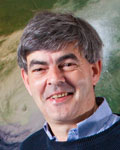Air Quality

Contacts, for more information:
The air we breathe contains a variety of pollutants. These gaseous and aerosol (particle) pollutants, resulting from fuel combustion and other anthropogenic activities, may be harmful to public health, vegetation, and the environment. Air pollution can also reduce visibility and influence climate. The lifetimes of air pollutants in the troposphere range from minutes to hours at the surface, and days to weeks in the free troposphere. Therefore, pollutant concentrations measured at a surface site are affected by natural as well as human-induced emissions on the local, regional, and hemispheric scale.
GFDL Research
GFDL’s global chemistry-climate models, in combination with various observations, help us to explore interactions among emissions, reactive chemistry, transport, air quality, and climate. Advancing this knowledge is crucial for designing effective control strategies to achieve a targeted level of air quality, as well as for assessing the impact of changing atmospheric composition on weather and climate.
We seek to better understand how emissions, chemical transformations, and transport and removal processes control the atmospheric abundance of gas-phase and particulate air pollutants and the associated impacts on public health, agriculture, and the environment. We study the contributions from natural sources (including biogenic emissions and transport from the stratosphere) and anthropogenic emissions to pollutant concentrations. In addition, we aim to assess the impacts of climate variability and climate change on historical and future air quality.
Research Highlights
- Reactive nitrogen partitioning enhances the contribution of Canadian wildfire plumes to US ozone air quality
- The GFDL variable-resolution global chemistry-climate model for research at the nexus of US climate and air quality extremes
- Reduction in near-surface wind speeds with increasing CO2 may worsen winter air quality in the Indo-Gangetic plain
- Tripling of western US particulate pollution from wildfires in a warming climate
- The GFDL global atmospheric chemistry-climate model AM4.1: Model description and simulation characteristics
- Vegetation feedbacks during drought exacerbate ozone air pollution extremes in Europe





